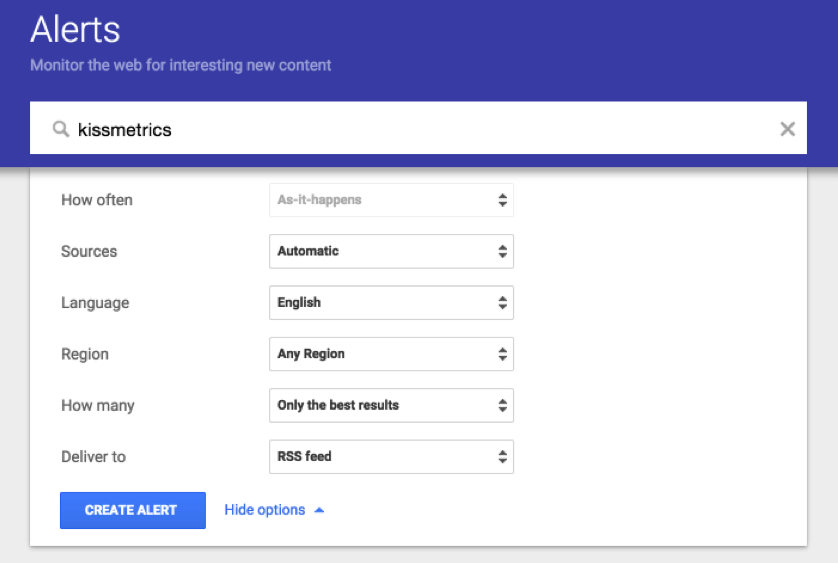Ah, B2B leads! How greatly sought. How fervently desired. How freaking hard to get!
If I could sum up the greatest desire of most entrepreneurs and business owners, it would be this: I want more leads. Unfortunately, the process of gaining B2B leads is not easy. Some niches are notoriously difficult to penetrate.
Chances are you’re no stranger to the marketing process. You already know the importance of identifying your target market, creating an ideal customer persona, streamlining your unique selling proposition, and having a foundation of great content.
What you need now are tactics. And what you’re about to read are three tactics that have consistently given me amazing results.
1. Find a big, active group on LinkedIn, and be its biggest supporter and participant
LinkedIn is killer. If you’ve been wondering where all your B2B leads are hanging out, wonder no more. They’re on LinkedIn. If you want to, go check right now.
Top sellers spend hours upon hours on LinkedIn. Why would they spend so much of their week on a single social platform? Because it has ROI.
There are leads on LinkedIn. You just have to find them and get them.
Here’s how.
Find a group that is big and active
To search for a group on LinkedIn, type your topic of interest into the search bar and hit “enter.” From there, navigate down the search results page until you find something that looks like this:
For more results, all you have to do is click on the “see all” link. It’ll take you to this page:
Search for a group using the keywords of your target industry. Keep in mind, there are groups for virtually every niche on the planet. Also, be aware that if you don’t pass as a professional within this niche, you may not be allowed into the group.
Next, you need to find a group that is both big and active. Look for both at the same time.
For example, here’s one of the largest and move active “content marketing” groups:
Find a group that is “promotionalish”
Let me be very clear on this point. Even though LinkedIn is a great place to find leads, that is not the express purpose of the network.
LinkedIn has aggressively patrolled its platform to keep it from descending into a recruiter paradise or a lead generation machine. It is one of the few places on the web where true professionals can come together to talk shop, unmolested by pesky marketers.
So, what should you do?
First of all, don’t be a pesky marketer.
You would not believe the number of pesky marketers that I face on LinkedIn.
Spam messages roll into my LinkedIn inbox on a regular basis. I can tell, at a glance, whether the message is of interest to me or not, and I usually delete them without opening them up for a closer look.
Some of the best groups to join are those that have 90% industry discussion and 10% semi-promotional posts. For example, this group I’m a member of has mostly topics and discussions that are bereft of self-promotion.
Occasionally, though, I’ll see something like this:
It’s only slightly promotional, but it is still very useful.
Get involved
Once you find a group and get settled, you’ll want to get involved. Participate in discussions, like posts, and share the content. The more activity, the better.
Be sure to spark some great discussion and provide some great answers. Focus on being helpful and proactive.
In some groups, you can distinguish between “discussions” and “promotions.” Most members will spend more time on “discussions” rather than “promotions,” so it’s best to keep to the discussion tab.
Connect with participants
Leads come through individuals, not groups. Therefore, it’s best if you have individual first-level connections with the group’s members. Once you’ve established a high level of interaction within the group, start connecting with other members.
Simply being an active participant in the group will give you leads. If you want to take a more aggressive approach, then I suggest following the advice of Dmitry Dragilev. He suggests creating a whitepaper, a landing page, and then asking for some promotional love from the group owner. Dmitry has gained dozens of leads using this technique.
2. Create a simple, easy-to-use software and market the heck out of it
Let’s face it. You’re not going to get leads by just asking for them. You have to give if you want to get.
So what do you give?
I’ve given away a lot of stuff. Books. Courses. Guides. Infographics. You name it, I’ve done it. Want to take a guess at my biggest and best giveaway of all time?
Software.
Even though my businesses sell software or knowledge products, I also created a standalone cloud SaaS that scores the SEO performance of a website and its competitors.
- Research your industry, and develop a software idea that will help to solve a problem for your target audience. It’s important that the product be free, support your core product or service, and be highly desirable. It’s okay if there are other products like it in the marketplace. It’s especially okay if those other products cost money.
- Create your product. If possible, spend no more than six months on conception to development.
- Generate content in the industry. A blog, along with the typical outlay of social media promotion is essential.
- Use Pay with a Tweet to promote the software.
The software I created at Quicksprout.com has a built-in advantage of being predisposed to marketing. For example, if a website receives a low score, the prospect is much more likely to convert. I position CTAs throughout the software in order to invite more conversions.
3. Monitor your brand for mentions, and jump on opportunities.
As your brand grows, you’re going to get talked about. How do you jump from the newcomer status to we-are-a-thing status?
Monitor your mentions and follow up on them.
The method is pretty simple.
- Set up an alert system for your brand or product.
- Join a discussion around the brand or product.
First, you’ll need to find a good alert platform. Monitoring is a great idea, even if you don’t use it for marketing. It’s ideal for maintaining brand awareness and prospecting for link opportunities. You can use Google’s free monitoring platform, Google Alerts. It’s simple, and you can set something up in just a couple minutes.
Once you’ve set up an alert, all you do is sit back and wait. When the mentions roll in, you may see random stuff that is useless, but you may also see valuable stuff that gives you instant leads.
My alerts tend to turn up a lot of forum discussions. Many of these provide opportunities to help members or even lend an authoritative voice to a discussion.
Chances are very high that you will find some target users carrying on some sophisticated discussion on your brand and product or service.
The more active you are in monitoring and joining the discussion, the more leads you’ll gain. Those who post these discussions and questions are clearly leads. All you have to do is shoehorn your way into the conversation in a helpful and appropriate way.
Conclusion
Although B2B leads are notoriously evasive, they are nonetheless extremely attainable. The secret is to find a method that works and pound it. Use this method until you exhaust its usability, then move on to another method.
Obviously, no method is entirely free. No method is entirely without risk. And no method is instantaneous. You’ll see the need to put in the time and make the effort to make some connections.
With these three methods, you’re well on your way to gaining some valuable leads in a very short amount of time.
What is your favorite B2B lead technique?






Comments (9)